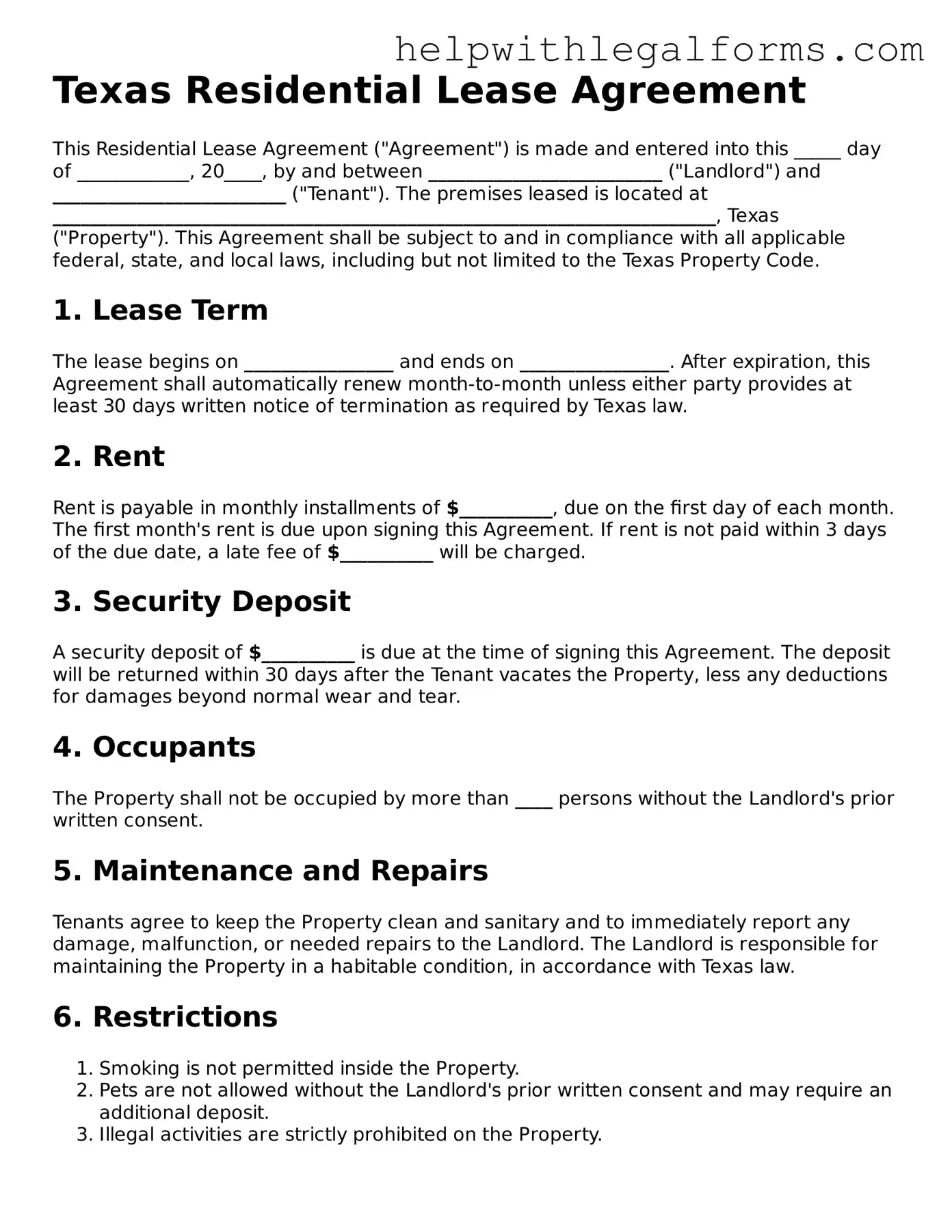Texas Residential Lease Agreement
This Residential Lease Agreement ("Agreement") is made and entered into this _____ day of ____________, 20____, by and between _________________________ ("Landlord") and _________________________ ("Tenant"). The premises leased is located at _______________________________________________________________________, Texas ("Property"). This Agreement shall be subject to and in compliance with all applicable federal, state, and local laws, including but not limited to the Texas Property Code.
1. Lease Term
The lease begins on ________________ and ends on ________________. After expiration, this Agreement shall automatically renew month-to-month unless either party provides at least 30 days written notice of termination as required by Texas law.
2. Rent
Rent is payable in monthly installments of $__________, due on the first day of each month. The first month's rent is due upon signing this Agreement. If rent is not paid within 3 days of the due date, a late fee of $__________ will be charged.
3. Security Deposit
A security deposit of $__________ is due at the time of signing this Agreement. The deposit will be returned within 30 days after the Tenant vacates the Property, less any deductions for damages beyond normal wear and tear.
4. Occupants
The Property shall not be occupied by more than ____ persons without the Landlord's prior written consent.
5. Maintenance and Repairs
Tenants agree to keep the Property clean and sanitary and to immediately report any damage, malfunction, or needed repairs to the Landlord. The Landlord is responsible for maintaining the Property in a habitable condition, in accordance with Texas law.
6. Restrictions
- Smoking is not permitted inside the Property.
- Pets are not allowed without the Landlord's prior written consent and may require an additional deposit.
- Illegal activities are strictly prohibited on the Property.
7. Termination
In the event of a breach of this Agreement, the non-breaching party has the right to terminate the Agreement upon providing written notice to the breaching party, as outlined in Texas Property Code.
8. Governing Law
This Agreement shall be governed by and construed in accordance with the laws of the State of Texas.
9. Acknowledgment
The parties acknowledge having read, understood, and agreed to the terms and conditions of this Agreement. They have been provided a copy of the Agreement.
Signatures
Landlord: ____________________________________ Date: _______________
Tenant: ______________________________________ Date: _______________
